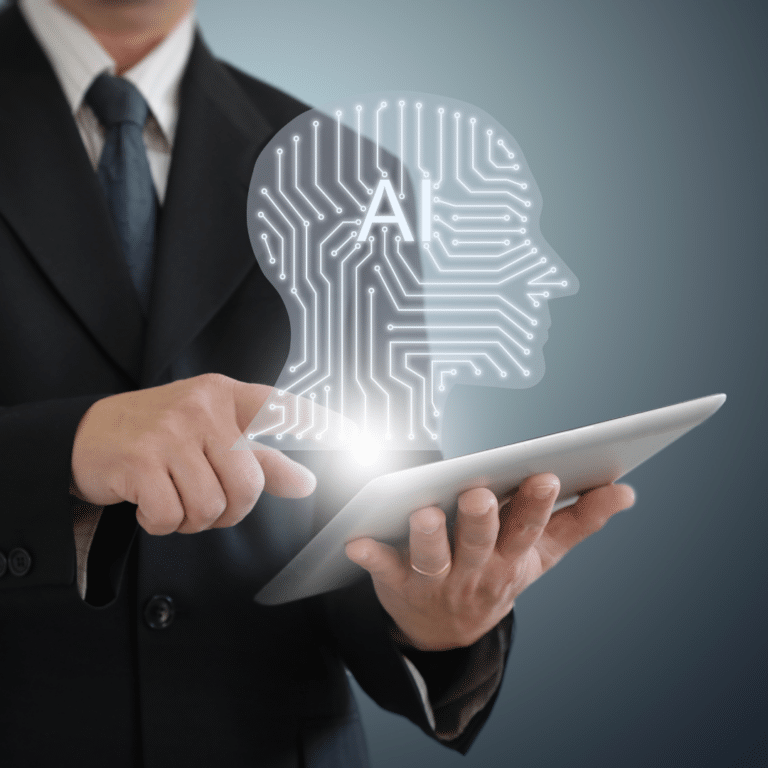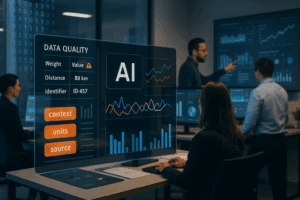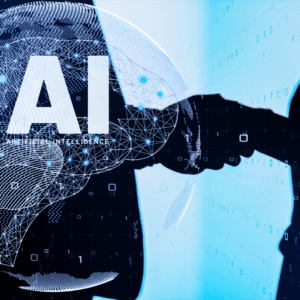In today’s rapidly evolving technological landscape, understanding artificial intelligence is crucial for leveraging its potential while recognizing its limitations. This article aims to clarify AI’s limitations and provide actionable insights for effectively utilizing this powerful tool. By appreciating AI’s evolution, we can better navigate its applications and implication decisions.
Understanding artificial intelligence involves recognizing that AI, while powerful, lacks true human-like intelligence. Firstly, AI is advanced computing, not human-like cognition. Secondly, humanizing AI is misleading and obscures its limitations. Thirdly, the quality of data and algorithms significantly impacts AI outcomes.
- The Evolution of AI: From Concept to Reality
- The Misconception of AI as Human-like Intelligence
- Humanizing AI: A Red Herring
- The Critical Role of Data in AI
- Artificial Intelligence: The Power of Algorithms
- Key Insights on Leveraging AI Effectively
- Debunking AI Myths: What You Need to Know
- Harnessing AI's True Potential
Key Takeaways:
- AI has advanced significantly since the 1950s, evolving from simple computing tasks to complex data processing, yet it remains distinct from human intelligence.
- AI is advanced computing, not human cognition, and recognizing this distinction helps set realistic expectations for its capabilities.
- Efforts to humanize AI can mislead; AI is best seen as a collaborative tool that enhances, not replaces, human capabilities.
- The quality of data is crucial for AI effectiveness; poor data leads to poor outcomes, underscoring the need for curated, accurate data..
- Algorithms must be explainable, consistent, and evidence-based to ensure reliable AI outcomes, highlighting the importance of human oversight.
- AI is a powerful tool requiring human oversight, high-quality data, and critical thinking to leverage its full potential responsibly.
- Debunk misconceptions about AI and clarify its capabilities to foster informed, effective, and ethical AI use in organizations.
By delving deeper into these key points, you’ll gain a comprehensive perception of AI’s true nature and its practical implications. Stay with us to explore how AI can be a powerful tool when used correctly and why human oversight remains essential.
The Evolution of AI: From Concept to Reality
Seventy-five years have passed since the term “Artificial Intelligence” (AI) first emerged in the 1950s. AI was initially defined as “the study of how to make computers do things which, at the moment, humans do better,” AI was a visionary concept. John McCarthy, a pioneer in the field, famously remarked, “As soon as it works, no one calls it AI anymore,” highlighting how AI continuously redefines itself as technology advances.
Over the decades, computing power has increased exponentially. We now live in an era where computers can perform tasks beyond human capabilities, from processing vast amounts of data to executing complex algorithms at incredible speeds. According to Moore’s Law, computing power doubles approximately every two years, contributing significantly to AI’s rapid development and capability expansion
However, the explosion of data in the digital age presents a significant challenge: a substantial portion of this data is low-quality, making it difficult to extract meaningful insights. Understanding Artificial Intelligence requires acknowledging both its remarkable progress and its limitations.
The Misconception of AI as Human-like Intelligence
Artificial Intelligence (AI) is frequently misunderstood as possessing human-like intelligence, yet at its core, it operates as advanced computing rather than true cognition. This misconception arises from the tendency to anthropomorphize AI systems, which can lead to unrealistic expectations. To illustrate, consider this analogy of nature versus nurture: Early AI systems were developed on limited hardware capacities (nature) and programmed to simulate rudimentary human functions (nurture). Today, with enhanced computing power (nature) and refined algorithms processing curated data (nurture), AI showcases impressive capabilities. However, labeling these systems simply as “AI” has caused confusion, often exaggerating their cognitive abilities. AI excels at specific tasks such as data analysis and pattern recognition but does not possess consciousness, emotions, or moral judgment, which are intrinsic to human intelligence. Recognizing this distinction is crucial for effectively leveraging AI technologies.
Humanizing AI: A Red Herring
Efforts to humanize AI can mislead both the public and researchers, obscuring the true nature and limitations of current AI systems. This anthropomorphism creates the illusion that AI can think and reason like humans, which it cannot. A good artificial intelligence is collaborative, complementing human capabilities rather than replicating them.
For example, according to Miller’s Law, humans can only hold about 7 ± 2 or 5 to 9 pieces of information in their short-term memory at once. In contrast, machines can process and track thousands of variables simultaneously. Humans get tired and lose focus, but machines operate tirelessly. Additionally, humans have value systems and a sense of right and wrong, which machines lack. Recognizing that AI enhances human capabilities rather than mimicking them allows for a more accurate understanding and effective use of AI technologies.
The Critical Role of Data in AI
The adage “garbage in, garbage out” has been a cornerstone of computing since its inception, highlighting the critical role of data quality in AI. Data, at its core, is just bits and bytes, but its quality can significantly impact AI outcomes. Poor data quality—dirty, inconsistent, or biased data—can lead to flawed results. For instance, there have been cases where artificial intelligence chatbots like ChatGPT provided incorrect or biased answers. For example, ChatGPT once generated a fictitious historical event, claiming that “Queen Elizabeth II was a prominent leader during the American Revolution,” which is historically inaccurate. This example underscores the importance of data quality. AI systems are only as good as the data they are trained on.
In 2016, IBM reported that poor data quality costs the U.S. economy around $3.1 trillion per year. Data must be curated to assess its value, much like evidence in a legal case. Just because data exists does not make it accurate or true, and its repetition does not increase its importance. Effective data management involves scrutinizing and validating data to ensure reliability.
Artificial Intelligence: The Power of Algorithms
AI and all computers rely on algorithms to process the data they receive. Using a legal comparison, if data is evidence, algorithms are the arguments made in a legal brief or courtroom. These algorithms need to be explainable, logically consistent, and grounded in evidence to produce reliable outcomes.
Most algorithms originate from scientific disciplines like probability, statistics, economics, and philosophy. Scientific conclusions must adhere to strict rules, and violating these rules can have significant risks. Computers, however, do not understand these risks, underscoring the importance of human oversight in AI applications. This ensures that AI’s power is harnessed responsibly and effectively.
Key Insights on Leveraging AI Effectively
AI / Advanced Computing is a Tool
AI is a powerful tool that requires human oversight. It can process vast amounts of data and perform complex computations but lacks consciousness and understanding. Recognizing AI as a tool helps set realistic expectations and ensures human judgment remains integral in decision-making, fostering a collaborative approach where AI enhances human capabilities.
Focus on Data
Improving data quality and relevance is crucial for effective AI outcomes. Research from Experian indicates that 87% of organizations believe data quality is fundamental to their operations. Investing in robust data management practices ensures the information fed into AI systems is accurate and relevant, minimizing errors and biases, and enhancing AI-driven insights.
The Importance of Human Thinking
Human critical thinking is essential in leveraging AI effectively. Humans provide context, ethical considerations, and nuanced understanding that AI lacks, ensuring AI applications align with organizational goals and societal values for balanced and effective outcomes.
Debunking AI Myths: What You Need to Know
There are several misconceptions about AI that need to be addressed. First, AI does not possess human-like intelligence; it excels in data analysis and pattern recognition but lacks consciousness and moral judgment. Second, AI cannot operate without human oversight; it requires human input to ensure ethical and effective application, as AI decisions can be flawed due to biases or errors in data and algorithms. Third, not all data is valuable for AI; data quality is crucial, and poor data leads to poor AI outcomes, emphasizing the need for curated and validated data.
AI can process vast amounts of data quickly, identify patterns for applications like image and speech recognition, fraud detection, and predictive analytics, and automate repetitive tasks. However, AI cannot understand contextual nuances, exhibit human emotions, make ethical decisions without oversight, or possess self-awareness. Understanding these limitations helps set realistic expectations and ensures responsible use of AI technologies.
Harnessing AI’s True Potential
Artificial intelligence is a powerful tool but not equivalent to human intelligence. AI excels at processing data and automating tasks but lacks consciousness and ethical judgment, requiring human oversight. Focus on data quality and integrate human critical thinking for effective AI applications.
Contact KaDSci today to energize your data. Our expert team will help you implement high-quality data practices and integrate Artificial Intelligence effectively, enhancing your decision-making processes and driving innovation. Reach out to KaDSci now!
What are the main applications of artificial intelligence in businesses today?
AI is used in businesses for data analysis, customer service, and process automation. It helps analyze large datasets, power chatbots for 24/7 support, and streamline operations to increase efficiency and improve decision-making.
How can businesses ensure the ethical use of artificial intelligence?
Businesses can ensure ethical AI use by implementing transparency, fairness, and accountability guidelines. Regularly audit AI systems for biases, ensure data privacy, involve diverse teams, and provide employee training on responsible AI practices.
What are the limitations of current AI technology?
AI lacks true understanding and consciousness, relies on the quality of training data, and can be opaque in decision-making. It also requires significant computational resources and expertise, necessitating human oversight for effective implementation.










